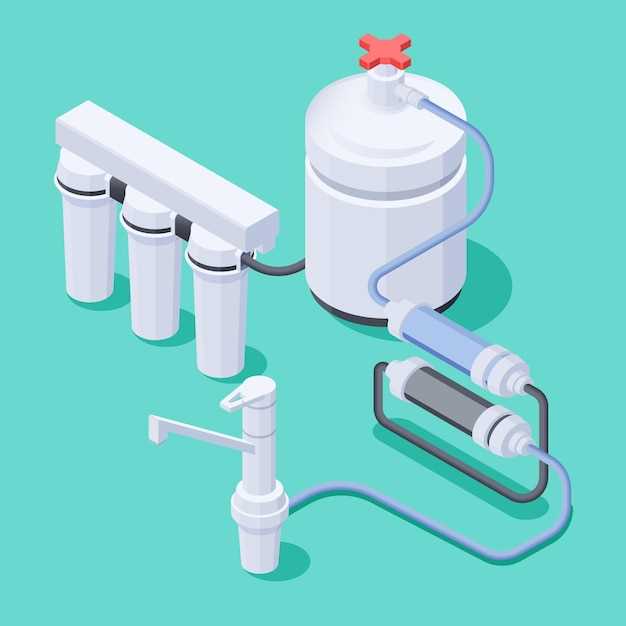
If you have been taking hydroxyzine for a long time, it is important to understand how to safely withdraw from the medication.
Hydroxyzine is commonly prescribed for a variety of conditions, including anxiety, allergies, and insomnia. However, like any medication, it is possible to develop a dependency and experience withdrawal symptoms when stopping its use.
Withdrawal from hydroxyzine should always be done under the guidance of a healthcare professional. Abruptly stopping the medication can lead to a range of uncomfortable symptoms, including dizziness, nausea, irritability, and difficulty sleeping. These symptoms can be managed through a gradual tapering process, where the dosage is slowly reduced over time.
It is important to communicate with your doctor about any concerns or symptoms you may be experiencing during the withdrawal process. They can provide you with the support and guidance needed to safely navigate this transition and help ensure your overall well-being.
Remember, the key to successfully withdrawing from hydroxyzine is to seek medical supervision and follow their instructions. Together, you can create a plan that minimizes discomfort and maximizes your chances of a successful withdrawal.
What is hydroxyzine withdrawal?
Hydroxyzine is a medication that is commonly used to treat anxiety, allergies, and tension. It belongs to a class of drugs called antihistamines, which work by blocking the effects of histamine, a chemical that is produced by the body in response to allergic reactions.
Hydroxyzine withdrawal refers to the symptoms that may occur when a person stops taking hydroxyzine after a period of regular use. While hydroxyzine is generally considered safe and effective when used as prescribed, it is possible for the body to become dependent on the drug. This means that the body can adapt to the presence of hydroxyzine and rely on it to function normally.
When the use of hydroxyzine is suddenly stopped or significantly reduced, the body may go through a period of withdrawal as it adjusts to the absence of the drug. Withdrawal symptoms can vary from person to person and may include:
1. Rebound anxiety:
- Increased feelings of anxiety or panic
- Restlessness or irritability
2. Insomnia:
- Difficulty falling asleep or staying asleep
- Disrupted sleep patterns
3. Nausea and vomiting:
- Feeling sick to the stomach
- Experiencing episodes of vomiting
4. Headaches:

- Throbbing or pulsating pain in the head
- Sensitivity to light or sound
5. Increased heart rate:
- Rapid heartbeat or palpitations
- Feeling of an accelerated heart rate
It is important to note that not everyone who stops taking hydroxyzine will experience withdrawal symptoms. The severity and duration of withdrawal symptoms can also vary depending on factors such as the dosage and duration of hydroxyzine use.
The symptoms of withdrawal from hydroxyzine
When someone suddenly stops taking hydroxyzine, they may experience a range of withdrawal symptoms. These symptoms can vary from person to person and may include:
- Insomnia: Many people who stop taking hydroxyzine may experience difficulty falling asleep or staying asleep.
- Anxiety: Withdrawal from hydroxyzine can lead to increased feelings of anxiety or restlessness.
- Nausea and vomiting: Some individuals may experience stomach discomfort, nausea, or vomiting as a result of hydroxyzine withdrawal.
- Irritability: Withdrawal from hydroxyzine can cause irritability and mood swings.
- Agitation: Feelings of agitation and restlessness may occur during hydroxyzine withdrawal.
- Headaches: Some individuals may experience headaches as a symptom of hydroxyzine withdrawal.
- Dizziness: Feeling lightheaded or dizzy is another possible withdrawal symptom.
- Sweating: Increased sweating or night sweats may occur during hydroxyzine withdrawal.
If you are experiencing withdrawal symptoms from hydroxyzine, it is important to seek support and guidance from a healthcare professional. They can provide you with recommendations on managing the symptoms and may suggest alternative treatments to help ease the withdrawal process.
How to manage hydroxyzine withdrawal
Managing withdrawal from hydroxyzine can be challenging, but with the right strategies, it is possible to ease discomfort and ensure a smooth transition.
1. Gradual tapering
One of the most effective ways to manage hydroxyzine withdrawal is by gradually reducing the dosage over time. This helps the body adjust to lower levels of the medication and minimizes the severity of withdrawal symptoms. It is important to do this under the supervision of a healthcare professional.
2. Supportive care
During the withdrawal process, it is important to prioritize self-care. This includes getting enough rest, eating a healthy diet, and engaging in stress-reducing activities such as meditation or gentle exercise. Additionally, seeking support from friends, family, or a support group can provide emotional and psychological support during this challenging time.
3. Managing symptoms
Withdrawal from hydroxyzine can cause a range of symptoms such as anxiety, restlessness, insomnia, and irritability. To manage these symptoms, individuals can explore non-medication-based strategies such as deep breathing exercises, progressive muscle relaxation, or engaging in hobbies or activities that promote relaxation. If symptoms are severe or interfering with daily functioning, it is important to consult a healthcare professional for further guidance.
4. Seeking professional help

If the symptoms of withdrawal become too difficult to manage or if there are concerns about relapse, it is crucial to reach out to a healthcare professional. They can provide guidance, support, and potentially prescribe alternative medications or therapies that can help ease the transition.
5. Gradual reintroduction
Once the withdrawal symptoms have subsided, it may be possible to gradually reintroduce hydroxyzine or explore alternative medications under the guidance of a healthcare professional. This allows for a more controlled and monitored approach to ensure the individual’s well-being.
| Benefits of Managing Hydroxyzine Withdrawal |
|---|
| Reduced severity of withdrawal symptoms |
| Improved overall well-being |
| Increased likelihood of successful discontinuation of hydroxyzine |
| Prevention of relapse |
In conclusion, managing hydroxyzine withdrawal is a gradual process that requires patience, self-care, and professional guidance. By following these strategies, individuals can alleviate discomfort and increase the chances of successful discontinuation.
Preventing withdrawal from hydroxyzine
Withdrawal from hydroxyzine can be a challenging experience, but there are steps you can take to minimize or prevent it altogether. Here are some strategies to consider:
- Taper off gradually: If you have been taking hydroxyzine for a long period of time, it is recommended to gradually reduce your dosage under the supervision of a healthcare professional. This can help your body adjust to lower levels of the medication and reduce the severity of withdrawal symptoms.
- Seek medical advice: It is important to consult with a healthcare professional before making any changes to your medication regimen. They can provide guidance on the safest and most effective way to taper off hydroxyzine and may recommend alternative treatments or medications to help manage withdrawal symptoms.
- Stay hydrated: Drinking plenty of water can help flush the drug out of your system and alleviate some withdrawal symptoms. Aim to drink at least 8 glasses of water per day.
- Eat a balanced diet: Proper nutrition is important during the withdrawal process. Make sure you are consuming a balanced diet that includes plenty of fruits, vegetables, lean proteins, and whole grains.
- Get regular exercise: Engaging in regular physical activity can help alleviate withdrawal symptoms by promoting the release of endorphins and improving your overall well-being. Aim for at least 30 minutes of moderate exercise, such as walking or swimming, on most days of the week.
- Practice relaxation techniques: Stress and anxiety can exacerbate withdrawal symptoms. Incorporating relaxation techniques, such as deep breathing exercises, meditation, or yoga, into your daily routine can help reduce stress levels and promote a sense of calm.
- Seek support: Going through hydroxyzine withdrawal can be challenging, both physically and emotionally. Joining a support group or reaching out to friends and family for support can provide you with the encouragement and understanding you need during this time.
Remember, everyone’s experience with hydroxyzine withdrawal is different, and what works for one person may not work for another. It is important to listen to your body, seek professional advice, and make changes to your routine that feel appropriate for you.
Alternative treatments for hydroxyzine withdrawal
While the best approach to managing hydroxyzine withdrawal is to consult with a healthcare professional, there are alternative treatments that may help alleviate symptoms and support the recovery process. These alternative treatments can be used in conjunction with medical advice and should not replace professional guidance.
1. Counseling and therapy: Consider seeking support from a therapist who specializes in addiction and withdrawal. They can provide guidance and strategies to cope with the emotional and psychological challenges that may arise during withdrawal.
2. Mindfulness and relaxation techniques: Engaging in activities such as yoga, meditation, deep breathing exercises, and progressive muscle relaxation can help reduce anxiety, promote relaxation, and improve overall well-being.
3. Healthy lifestyle modifications: Making positive changes to your lifestyle can have a significant impact on withdrawal symptoms. This may include adopting a balanced diet, staying hydrated, getting regular exercise, and ensuring an adequate amount of sleep.
4. Support groups: Connecting with others who have experience with hydroxyzine withdrawal can provide a sense of camaraderie and understanding. Support groups, whether in-person or online, can offer a safe space to share experiences, gain knowledge, and receive support.
5. Herbal remedies and supplements: Certain herbs and supplements, such as valerian root, chamomile, passionflower, and omega-3 fatty acids, have been suggested to have calming and anxiety-reducing properties. However, it is important to consult with a healthcare professional before adding any new supplements to your routine.
Remember, it is crucial to speak with a healthcare professional before starting any alternative treatments to ensure they are safe and appropriate for your individual situation.
